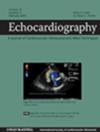Effects of Isoproterenol Administration in Dobutamine Stress Echocardiography
Abstract
Objective
This study evaluated the safety and efficacy of isoproterenol administration as an adjunct for achievement of target heart rate (HR) during dobutamine stress echocardiography (DSE).
Background
In DSE, optimal accuracy is achieved when a target HR of 85% of maximal predicted heart rate (MPHR) is attained. Although rarely studied, intravenous isoproterenol has been used as an adjunct therapy to dobutamine and atropine to increase chronotropic response during pharmacologic stress testing.
Methods
We identified 5569 DSE studies during which 264 received isoproterenol at MedStar Georgetown University Hospital from August 2011 to March 2023. Of the studies receiving isoproterenol, we collected clinical and echocardiographic parameters from each study to assess the effects of isoproterenol administration, including downstream events.
Results
In 264 examinations with isoproterenol, 169 (64%) achieved 85% MPHR. Among these, 103 (39%) developed premature ventricular contractions, 79 (30%) developed symptoms including nausea/vomiting in 44 (17%), and chest pain in 15 (6%). There was a hypertensive response to stress in 53 studies (20%) and a hypotensive response in 37 studies (14%). There was no significant increase in 30-day and 1-year death when compared to studies that did not receive isoproterenol.
Conclusions
Isoproterenol can effectively be used as an adjunctive agent in DSE to achieve the requisite hemodynamic stress for evaluation of ischemia, with a similar rate of side effects and complications compared to dobutamine and atropine stress testing.

 求助内容:
求助内容: 应助结果提醒方式:
应助结果提醒方式:


